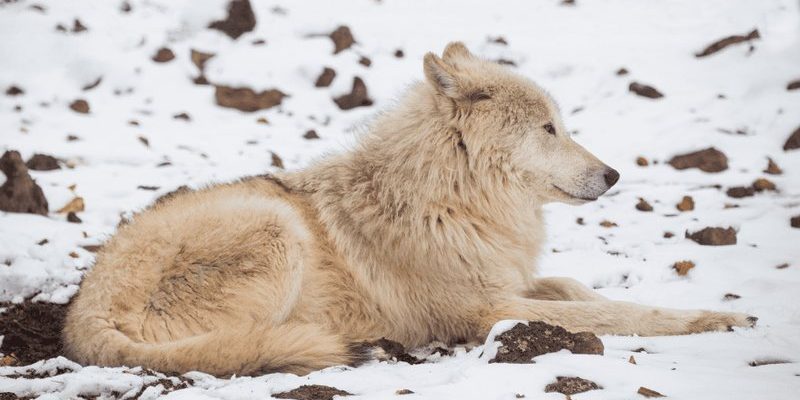![Comparing The Tundra Wolf Vs. [Similar Species]](https://gudri.com/wp-content/uploads/2025/06/Comparing_The_Tundra_Wolf_Vs___Similar_Species__image_0.jpg)
So, how do these wolves stack up against each other? Let’s dive into their habitats, physical characteristics, hunting behaviors, and social structures to appreciate what makes each of them special. Whether you’re a wildlife enthusiast or just curious about these fascinating animals, we’re going to break it down like we’re having a casual conversation over coffee.
Habitat: Where Do They Call Home?
The Tundra Wolf primarily resides in the Arctic regions, where the environment is harsh and unforgiving. You might picture vast stretches of snow and ice, with little in the way of vegetation. This wolf has adapted to survive in extremely cold climates, often roaming the tundra’s expansive landscapes in search of prey. Their range often includes areas in northern Canada, Greenland, and parts of Alaska.
On the other hand, the Gray Wolf has a much broader habitat range. You can find these wolves across various ecosystems, from forests and mountains to grasslands and deserts. They thrive in parts of North America, Europe, and Asia. This adaptability allows Gray Wolves to hunt a diverse array of prey, supporting their survival in different environments.
Picture it this way: the Tundra Wolf is like a specialized athlete excelling in winter sports, while the Gray Wolf is akin to a versatile player who can ace multiple sports on different fields!
Physical Characteristics: Size and Appearance
When it comes to size, Tundra Wolves tend to be slightly larger than their Gray counterparts. An adult Tundra Wolf can weigh between 85 to 150 pounds, while Gray Wolves typically weigh around 50 to 110 pounds. This larger size helps Tundra Wolves retain body heat and provides them with an advantage while hunting in cold conditions.
In terms of appearance, Tundra Wolves have thicker fur, which helps them stay warm in freezing temperatures. Their coats often range from white to gray, blending seamlessly with their snowy surroundings. Gray Wolves, meanwhile, sport a more varied color palette, including shades of gray, black, and brown. This variation helps them camouflage in different habitats.
Imagine the Tundra Wolf as the heavyweight champion in a winter competition, while the Gray Wolf is the agile contender in a broader range of events.
Diet and Hunting Behavior: How Do They Feed?
Both the Tundra and Gray Wolves are carnivorous, which means they primarily eat meat. Their hunting methods, however, reflect their environments. Tundra Wolves often hunt large prey, such as caribou and muskoxen, using their size and strength to take down these formidable animals. Their hunting strategy typically involves patience and teamwork, as they work in packs to isolate a target from the herd.
Gray Wolves, with their adaptability, may hunt a wider array of animals. They often go after deer, elk, and smaller mammals like rabbits and rodents. Their hunting strategies can include chasing down speedy prey over long distances or utilizing stealth to ambush unsuspecting animals.
Here’s the thing: while both species rely on teamwork to hunt successfully, the Tundra Wolf’s hunting style is more about tackling large prey in their snowy domain, while the Gray Wolf excels in versatility, adjusting their tactics based on the environment and the prey at hand.
Social Structure: How Do They Live Together?
Wolves are known for their strong social structures, and both the Tundra and Gray Wolves demonstrate interesting pack dynamics. Generally, Tundra Wolf packs are smaller, usually consisting of about 5 to 10 members. These packs often include a mated pair and their offspring. The smaller size helps them maintain cohesiveness in the harsh tundra environment.
In contrast, Gray Wolves often form larger packs, sometimes up to 20 individuals. This larger group allows them to take down bigger prey and defend their territory more effectively. The hierarchy in both types of wolves is quite similar, with a dominant breeding pair leading the pack.
You might be wondering how these social structures impact their survival. Well, tighter-knit Tundra Wolf packs can efficiently coordinate their efforts in the extreme cold, while the larger Gray Wolf packs benefit from collaboration in hunting and territory defense.
Conservation Status: How Are They Faring?
Both the Tundra and Gray Wolves face threats, but their conservation statuses differ. The Tundra Wolf is considered more vulnerable due to its limited habitat range and the harsh conditions that affect its prey availability. Climate change is a significant concern, as warming temperatures are altering the tundra ecosystem, impacting the wolf’s survival.
On the flip side, the Gray Wolf has had a more complicated conservation journey. While Grey Wolves were once endangered due to hunting and habitat loss, conservation efforts have helped their populations recover in many areas. However, they still face challenges such as habitat fragmentation and human-wildlife conflicts.
Think of it this way: the Tundra Wolf is like a rare flower struggling to thrive in a changing climate, while the Gray Wolf is more like a resilient tree that has withstood the storms, yet still requires care to remain strong.
Summary: Appreciating Both Species
In summary, both the Tundra Wolf and the Gray Wolf are fascinating creatures that showcase the beauty and diversity of nature. Each species has unique adaptations that allow them to thrive in their respective environments. Whether through the Tundra Wolf’s ability to withstand extreme cold or the Gray Wolf’s versatility across various habitats, these wolves remind us of the incredible resilience of wildlife.
As we reflect on their differences and similarities, we can appreciate not just their roles in the ecosystem but also the need to protect their habitats. Every species contributes to the rich tapestry of life, and understanding these magnificent creatures helps us work towards their conservation.
In the end, whether you’re drawn to the icy charm of the Tundra Wolf or the adaptable nature of the Gray Wolf, there’s no denying that both deserve our respect and protection.

